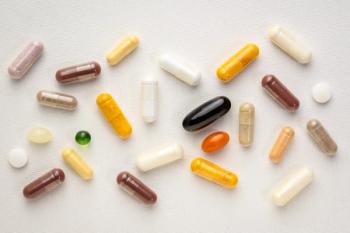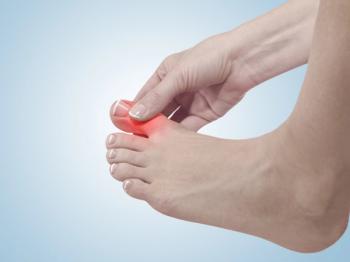
Pharmacy Practice in Focus: Oncology
- April 2024
- Volume 6
- Issue 3
HSSP Model Can Reduce Financial Toxicity of Oral Oncology Treatment
PAPs in this model can significantly reduce OOP costs regardless of the pharmacy setting.
Despite significant treatment advances and the expanded use of precision medicine and novel oral oncology agents, cancer continues to be one of the most expensive diseases to treat. High out-of-pocket (OOP) costs of oral oncology agents and other therapies—which often cost $10,000 per month or more—can place financial burdens on both patients with cancer and their families or caretakers, contributing to financial toxicity.
Financial toxicity can also result in patients and caretakers making decisions that can impact treatment adherence. To continue to afford treatment, patients and caretakers may skip doses to stretch out treatment over a longer time, or reduce expenditure on food, clothing, and leisure activities, affecting quality of life. Some patients turn to long-term strategies—such as refinancing housing or borrowing money—to offset the cost of cancer treatment. The burden of these efforts can induce stress, anxiety, and depression in patients, hindering their quality of life and potentially extending to the patients’ caregivers.
“Recent literature cites rising OOP costs and negative effects of financial toxicity on [patients with cancer]; however, this has not been the experience with many patients filling oral oncolytics through health-system specialty pharmacies [HSSPs],” said Martha Stutsky, PharmD, BCPS, director of clinical outcomes at Shields Health Solutions.
Through HSSPs, patient assistance programs (PAPs) help alleviate prescription costs by providing financial support; however, finding and identifying available PAPs, screening for eligibility requirements, and enrolling patients into programs to access the necessary financial assistance (FA) can be a lengthy, complex process. PAPs can fall into 1 of 3 categories: manufacturer-funded co-pay cards or vouchers, which are available to commercially insured patients; manufacturer free drug programs, which are also funded by manufacturers but have strict income eligibility requirements; and charitable foundations or grant programs, which can help cover expenses such as travel costs, mortgage payments, and pet care as well as connect patients with resources to address financial hardships. Further, the model includes liaisons, monthly refill calls, frequent clinical pharmacist assessments, and direct communication between the pharmacy and health care team.
“PAPs can significantly reduce OOP costs for oral oncolytic [therapies], and the integrated care model of HSSP is optimally positioned to access PAP funds for patient benefit,” Stutsky said. “The integrated, patient-centered model of HSSPs allows direct communication between the pharmacy and health care team to identify patients with high co-pays and secure FA sooner than if these patients were filling prescriptions at a nonintegrated pharmacy,” Stutsky said. “We wanted to explore the impact of the HSSP model on reducing financial burden in the patient population filling oral oncolytic [therapies].”
To describe the impact of PAPs on OOP costs for patients with cancer who filled oral oncology agents through HSSPs, a retrospective analysis of prescription fill data was conducted. The study included adult and pediatric patients who attend oncology clinic visits and received 3 or more fills of an oral oncology agent through an HSSP from January 1, 2020, to September 30, 2022.
A total of 33,697 medication fills for 3084 patients were recorded. The average OOP cost per fill varied depending on the medication, and the median was skewed significantly because of high outliers. Approximately 81% (n = 27,137) of the distinct fills were associated with an OOP cost less than $5, and of those patients who had an OOP cost of less than $5, approximately 89% had FA secured.
Further, patients with government insurance filling brand medications received FA 92% of the time, compared with a rate of 83% for fills for generic medications. In contrast, 81% of patients in the nongovernment group filling brand medications had FA secured, compared with 49% of patients filling generic medications. According to the authors of the retrospective analysis, these data highlight the role of manufacturer support in lowering OOP costs for brand medications as well as the significance of grant funding and PAPs for government-insured patients who receive generic medications.
Pharmacy liaisons, who ideally are embedded within specialty clinics, also provide support through therapy enrollment processes, assessing financial needs, directly coordinating with drug delivery, and monitoring patients’ adherence to therapies. In addition, an integrated model can help identify potential risk early (at the time of the first fill) and can include outreach to a PAP targeted toward solving the problem prior to the clinical outcomes being compromised, according to the authors of the retrospective analysis.
“In an integrated HSSP model, the pharmacy liaison is often the first member of the interdisciplinary health care team to speak to the patient about the cost of their medication and to inform them about options for assistance,” Stutsky said. “As the expert in accessing available funding, the liaison navigates patients through the enrollment process to reduce delays to starting therapy.”
According to Stutsky, an additional advantage of pharmacy liaisons within integrated HSSPs is the ability to identify FA for patients within the health system, regardless of the pharmacy at which they fill.
“If a prescription is transferred to an external pharmacy due to insurance mandates or other reasons, the Shields liaison still coordinates the PAP with the patient and works with the external pharmacy to ensure that the patient receives their medication in a timely manner,” Stutsky said. “Because the liaison has visibility to the electronic medical record [EMR] and communication with the clinic, these patients are followed through the process by the HSSP regardless of the location of their fill.”
Shields Care is an HSSP that works with health system partners to manage prior authorization by embedding pharmacy liaisons into specialty clinics. The Shields model identifies FA for patients in the health system regardless of whether their pharmacy location is within the health system.
“[This model] was created to address inadequate specialty patient outcomes secondary to limited access, insurance barriers, financial toxicity, poor adherence, low patient engagement, and patient/provider dissatisfaction in the specialty pharmacy marketplace. Health systems are uniquely positioned to provide unparalleled patient care because the patient, prescribers, nurses, support staff, and specialty pharmacy team are all colocated, use a shared EMR, and have integrated workflows and direct communication,” Stutsky said.
Although financial toxicity continues to be a problem within cancer care, the implementation of PAPs can help reduce the burden, and HSSPs—such as in that of the Shields model—are created to optimize PAP funds. Reducing the OOP costs for patients with cancer can increase accessibility to medication while potentially improving treatment adherence and clinical outcomes. According to Stutsky, the next steps to addressing financial toxicity within oral oncology involve enabling patient access to these programs; however, long-term strategies will require more effort because more complex strategies must be developed.
“PAPs and facilitating patient access to these programs is an interim solution to the issue of financial toxicity in oral oncology,” Stutsky said. “However, long-term strategies to solve the problem include policy changes—including Medicare Part D benefit design—and addressing the high cost of these medications.”
REFERENCE
Stutsky M, Lindner C. The challenge of financial toxicity in cancer care: a focus on oral oncology. Shields Health Solutions. October 5, 2023. Accessed January 4, 2024. https://www.shieldshealthsolutions.com/wp-content/uploads/2023/10/Shields_ WP_2023_OncologyFinTox_10.5.23.pdf
Articles in this issue
Newsletter
Stay informed on drug updates, treatment guidelines, and pharmacy practice trends—subscribe to Pharmacy Times for weekly clinical insights.










































































































































































































